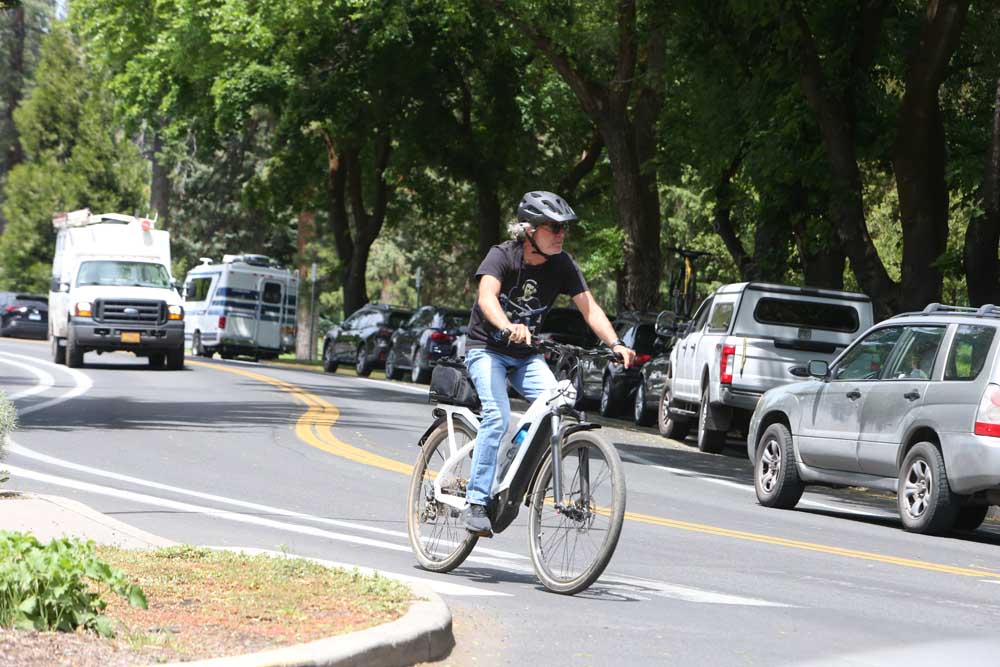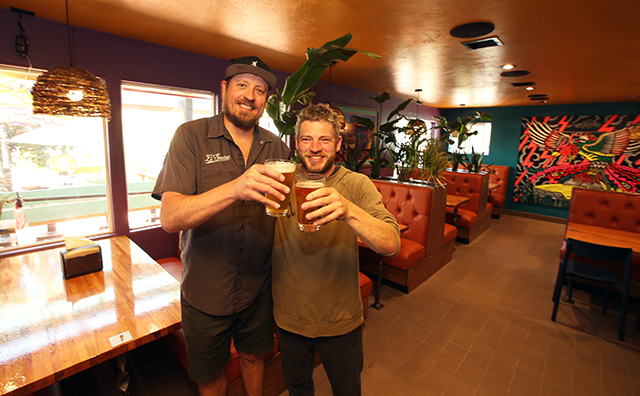Back pain? Try these exercises
Published 3:43 pm Tuesday, September 5, 2017

- Kevin Bourlai, a physical therapist with Results Neck & Back Therapy, demonstrates the side bridge exercise at Results Neck & Back Therapy in Bend on March 21, 2017.(Andy Tullis/Bulletin photo)
Odds are you’ll probably have low back pain at some point in your life — most likely when you get up in years.
The reasons — and the cures — are complicated. If they weren’t, lots of surgeons, physical therapists, chiropractors and others wouldn’t have jobs, said Kevin Bourlai, a physical therapist with Results Neck & Back Therapy in Bend.
“It is something that’s a common part of being a human being,” he said.
A plethora of different things can cause low back pain. Bourlai’s clinic is geared specifically toward backs and necks. He said it’s most commonly caused by two issues in particular, which tend to appear when people hit their 40s, 50s and 60s.
The first is disc bulges. They occur when the discs of the spine become less hydrated, usually because of age, and tears develop that move the discs away from the center of the spine, where they’re supposed to be. Sometimes that happens because of a person’s lifestyle: too much sitting and bending forward.
Back pain can also happen when certain joints in the spine wear down over time and start to become narrower, sort of like an arthritic hip or knee, Bourlai said. Disc degeneration is the same reason people may lose an inch or two in height when they age.
“It is kind of a natural aging process,” he said. “You can have all that stuff without pain and you can have that stuff with pain. It gets confusing.”
Pain is worsened over time by continuous flexing of the spine when people bend forward in a chair to tie their shoes or bend down to feed their cats. That’s stressful on the discs of the spine.
If you’re having low back pain, it’s best to have a professional check it out to see what’s causing it. But there are a few exercises and stretches you can try on your own before enlisting the experts.
Three of them come from Stuart McGill, a world-renowned expert in spine function. The amount of time you hold them and number of repetitions is up to you. For his part, Bourlai recommends doing them until they become difficult to perform without straining.
Timothy Burnett, a kinesiology instructor with Oregon State University-Cascades, said in his experience working as a personal trainer, the low back pain many older adults complained to him about was because of tight hip flexors, the group of muscles that stretch from the top of both femur bones into the pelvis and to the bottom of the spine.
Sitting for long periods of time causes hip flexors to shorten. When people stand, those shortened muscles then pull the front of the pelvis down in front, causing it to tilt forward. That puts strain on the lower back and can lead to an exaggerated curve at the lower spine called lordosis.
“The difficulty is that, for one, they’re not very visible muscles,” Burnett said. “It’s not a bicep that you can visually see. It also isn’t in the area that most people would expect. It’s not in the area that they feel the pain.”
Burnett suggests stretching the hip flexors (stretches described below) once or twice per day to relieve or even prevent low back pain. He also recommends alternating between standing and sitting to keep the blood flowing to various muscles in the body. If you’re standing, be sure to shift from left to right rather than staying in one position. He even keeps one foot on a balance board while standing at his desk, which keeps his muscles and joints shifting constantly.
“If people can keep from staying in one position, that keeps tissues healthy,” he said. “Movement is our friend.”
The spine also relies on movement to drive nutrient-carrying fluid to the joints and discs throughout the day, Bourlai said. Standing, while perhaps better than sitting, still has drawbacks if people aren’t moving around. He recommends propping one foot onto something to keep the spine in a neutral position.
While sitting, Bourlai recommends people use a chair with lumbar support or get a lumbar roll, a tiny cushion that goes behind the lower back. In some cases, all it takes to relieve low back pain is supporting the spine’s natural curve while sitting.
“Sometimes you don’t need more than that,” he said. •
1) Press up exercise (below)
How it’s done: Lie on your belly with your back relaxed. As Bourlai explains, it’s just going along for the ride. Place your palms on the floor below your shoulders and straighten your arms.
Why? This posture takes pressure off of the tissues in the spine that are getting too much load from sitting or bending.
If you can’t do this, just place both hands on your lower back and lean the upper body backward once a day. This is called an extension.
2) Curl-up
How it’s done: Lie on your back with one leg stretched out and the other bent. Put a rolled towel or some sort of cushion under the low back to support proper spine posture.
Place your hands behind your head, elbows to the sides and lift your head up just enough to lift your shoulder blades off the floor. Pretend you’re going up toward the ceiling, not toward your legs like a sit-up. Be sure to support the head and neck without straining.
Why? This works the abdominals and muscles around the spine while not straining the spine.
3) Bird-dog
How it’s done: Get on all fours and allow for a slight curve in your low back. Lift one arm and stretch it out in front of you, palm facing down and extend the opposite leg behind you. Hold for about 5 seconds and repeat with other arm and leg. Keep your head down.
Why? This works the muscles in your back, the abdominal muscles and glutes and is easy on the spine.
4) Side bridge (right)
How it’s done: Lie on your side with your elbow beneath your shoulder and lift your hips to create a bridge with your body using one elbow and either the knees or the feet on the same side. Keeping your legs straight adds more challenge. Keep your feet at a 90-degree angle. Switch sides and repeat.
Why? Activates several muscle groups while being gentle on the spine.
5) Lunge stretch (right)
How it’s done: Get into a lunge position, with one leg bent at a 90-degree angle and the other kneeling on the ground. Keep the upper body up straight. Shift your hips forward without moving your upper body. Switch legs and repeat.
You should feel this stretch down the front of the leg that’s on the ground. It’s a subtle movement, but Burnett says it goes a long way toward stretching the hip flexors. Burnett recommends doing this after you’re warmed up, such as after a workout or climbing a flight of stairs rather than right after waking up.
Why? Can prevent low back pain in some people by stretching the hip flexors.
6) Quadriceps stretch (below)
How it’s done: Stand up straight. Bend one leg backward at the knee and grab that foot with the hand on the same side. Grab a chair or wall with the other hand for support. Pull the leg toward your butt, keeping upper body straight. Hold and repeat on opposite side. People who have difficulty performing this stretch can modify it by lying on their sides while performing the stretch. Another modification would be to place a strap or resistance band around the foot and hold onto that rather than to the foot itself.
Why? Can prevent low back pain in some people by stretching the hip flexors.






